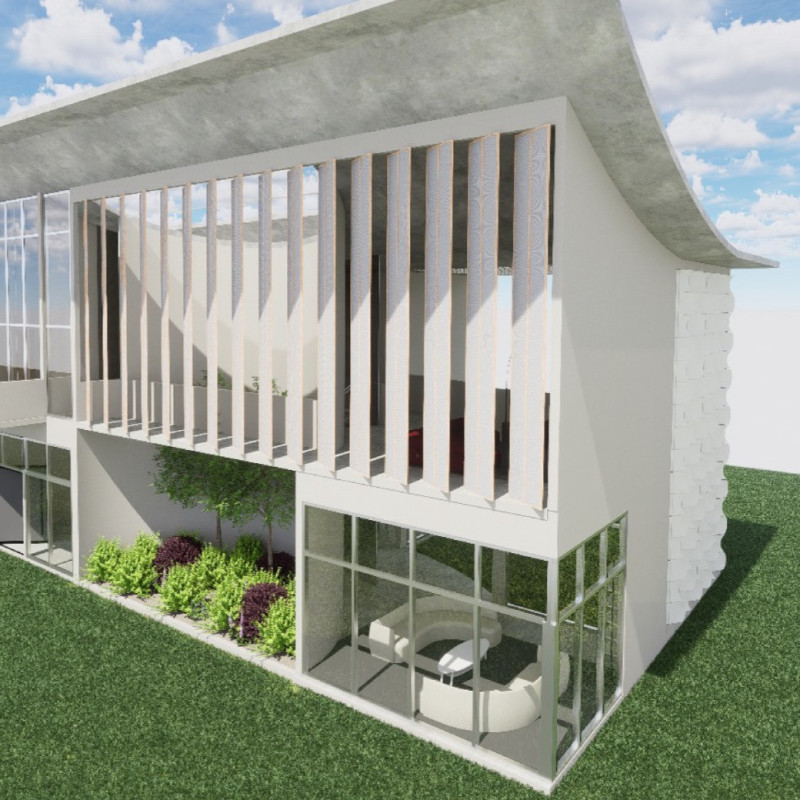5 key facts about this project
At its core, the design of this project emphasizes openness and connectivity. The architectural layout has been meticulously crafted to facilitate easy movement and accessibility throughout the space. The arrangement of areas within the building allows for a seamless transition between various functions, whether it be communal gatherings, individual activities, or dynamic work environments. This flexibility is essential in meeting the evolving demands of modern life, adapting easily to different uses over time.
One noteworthy aspect of this project is its materiality. The architects opted for a palette that merges durability with aesthetic warmth. Predominantly featuring concrete, glass, wood, and steel, these materials have been chosen not only for their physical properties but also for their ability to create a sensory experience. The use of concrete provides a robust framework, while large expanses of glass promote transparency, connecting the indoors with the vibrant activity of the outside world. Wood elements introduce natural textures and warmth, inviting occupants to engage comfortably within the space. Steel plays a supporting role, offering structural resilience that enables innovative design features such as cantilevers or expansive open areas, which invite natural light and views of the surroundings.
The architectural design takes into account the local climate and environment, integrating elements that support sustainable practices. Features such as green roofs, rainwater harvesting systems, and energy-efficient technologies highlight a commitment to environmental responsibility. These features not only minimize the ecological footprint of the structure but also serve as educational elements for occupants, showcasing the importance of sustainability in modern architectural practice.
Additionally, this project reflects a keen awareness of its cultural context. Designed with local traditions and community values in mind, it seeks to serve as a gathering space that resonates with the identity of the neighborhood. The architectural forms echo familiar shapes and materials found in the surrounding area, grounding the structure in its locality while simultaneously introducing a contemporary twist. Public art installations and community spaces are thoughtfully integrated within the design, enhancing the connection between the building and the inhabitants it serves.
The unique design approaches adopted in this project include an emphasis on biophilic principles that encourage a strong connection with nature. Incorporating natural light and greenery not only improves the aesthetic appeal but also contributes to the well-being of those who occupy the space. Large windows and strategically placed courtyards create an environment where indoor and outdoor experiences blend fluidly, fostering a sense of tranquility and promoting mental health.
As one explores the project details further, including architectural plans and sections, it becomes evident how the thoughtful integration of these elements results in a cohesive architectural statement. From the external appearance to the internal functionality, this design encapsulates the principles of effective architecture by marrying aesthetic appeal with practical, inclusive design. The successful execution of this project invites observers to consider how architecture can enrich community life while remaining true to the environment it inhabits.
For those interested in a deeper understanding of this architecture project, reviewing the architectural plans, sections, and designs will provide valuable insights into the nuanced ideas that underpin its creation. The unique architectural strategies employed here make this project a compelling example of contemporary design, showcasing how thoughtful architecture can indeed serve as a vital participant in the urban landscape.


























